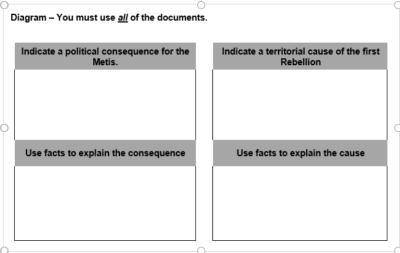
Federal-Provincial Relations
Canada’s new constitution, the 1867 British North America Act outlined the distribution of powers between the two levels of government: the central (or federal) government and the provincial governments. Canadian federalism was very centralized, with the federal government holding a considerable amount of power, generally over the most important jurisdictions. The Québec premier, Honoré Mercier, opposed Prime Minister John A. Macdonald’s centralist vision, and fought to defend provincial autonomy. He organized an interprovincial conference in 1887, with the premiers of the other provinces (which by that time included Manitoba, PEI, and British Columbia), to fight against the use of the power of disallowance. It wasn’t until the early 20th century that the federal government stopped using this right, which up until then allowed them to refuse any provincial legislation they didn’t agree with. This fight for provincial autonomy continues to the present day.
After purchasing the western territories from the Hudson’s Bay Company, without having consulted the Métis and Indigenous populations who had long been living there, the Canadian government began to settle the area. In 1869, the area south of Lake Winnipeg, near the Red River, was inhabited by about 10 000 Métis, descendants of unions between coureurs de bois and Indigenous people. They were mainly French-speaking Catholics, and subsisted from farming and hunting bison. With complete disregard for the Métis’ territory the Canadian government divided the Red River area into townships for white colonists to settle. Feeling under attack, the Métis rallied together under the leadership of Louis Riel to defend their lands.
[3:14 PM]
After occupying Fort Garry in 1869, Riel demanded recognition of their territorial, linguistic and religious rights. In spring, the Canadian government agreed to many of their demands and passed the Manitoba Act, which created Canada’s fifth province. The act recognized the Métis title to the land they occupied, their right to a bilingual parliament, and stated that their language and religion would be respected in Manitoba schools. Despite its promises, the Canadian government continued to colonize the area, forcing the Métis further west, into present-day Saskatchewan. But the railway and the immigrants kept coming and Louis Riel organized a second rebellion, which was crushed by federal soldiers in 1885. Louis Riel was sentenced to death for high treason and was hanged on November 16th, 1885. By 1890, Manitoba had eliminated all funding for French Catholic schools.1
Indian Affairs
In the first half of the 19th century, a rapidly growing population led settlers to colonize areas outside the Saint Lawrence Valley, further encroaching on Indigenous territory. As the forest industry grew in the regions (Outaouais, Saguenay, and Mauricie), Indigenous people were seen as an impediment to colonization. As a result, the government sought to impose a sedentary way of life, evangelize, and, in general, assimilate them. The first Indian reserves were created in 1853 in Lower Canada in order to achieve these goals. These new reserves were added to the seven reserves already in the Saint Lawrence Valley that had been created under the French Regime. Aided by Catholic and Protestant missionaries, the government forced any Indigenous nations to settle in these segregated areas in an attempt to secure access to the provinces natural resources. In later years, the Canadian government signed a series of Numbered Treaties (one to eleven), that transferred large expanses of Indigenous land, from Northern Ontario to British Columbia to the Government of Canada in exchange for reserve land, services like medical care and food aid, and other goods and equipment. One of the great shames of Canadian history is John A. Macdonald’s policy of using starvation and famine to force Indigenous peoples onto the newly created reserves. (See reference to the article below.)2


Answers: 3


Another question on History


History, 22.06.2019 00:00
Need asap). based on the government system in the united states, which individual activity is used to directly influence legislative decisions? source: florida department of education. ( a) watching political debates on television, ( b) gathering signatures for a petition, ( c) discussing political issues at work, ( d) collecting opinions for a yearbook. ( question 2) -- i posted a picture of the question and answer choices.
Answers: 1

History, 22.06.2019 01:30
Which physical feature minimizes population density in northern africa?
Answers: 3

History, 22.06.2019 02:00
Determine whether the following descriptions belong to michelangelo, raphael, or both. important works include school of athens was a renowned artist of the italian renaissance served under the patronage of pope leo x important works include the sculpture la pieta
Answers: 2
You know the right answer?
Federal-Provincial Relations
Canada’s new constitution, the 1867 British North America Act outlined...
Questions

Mathematics, 28.09.2019 03:10

History, 28.09.2019 03:10


Mathematics, 28.09.2019 03:10


Mathematics, 28.09.2019 03:10

History, 28.09.2019 03:10


Mathematics, 28.09.2019 03:10

History, 28.09.2019 03:10












